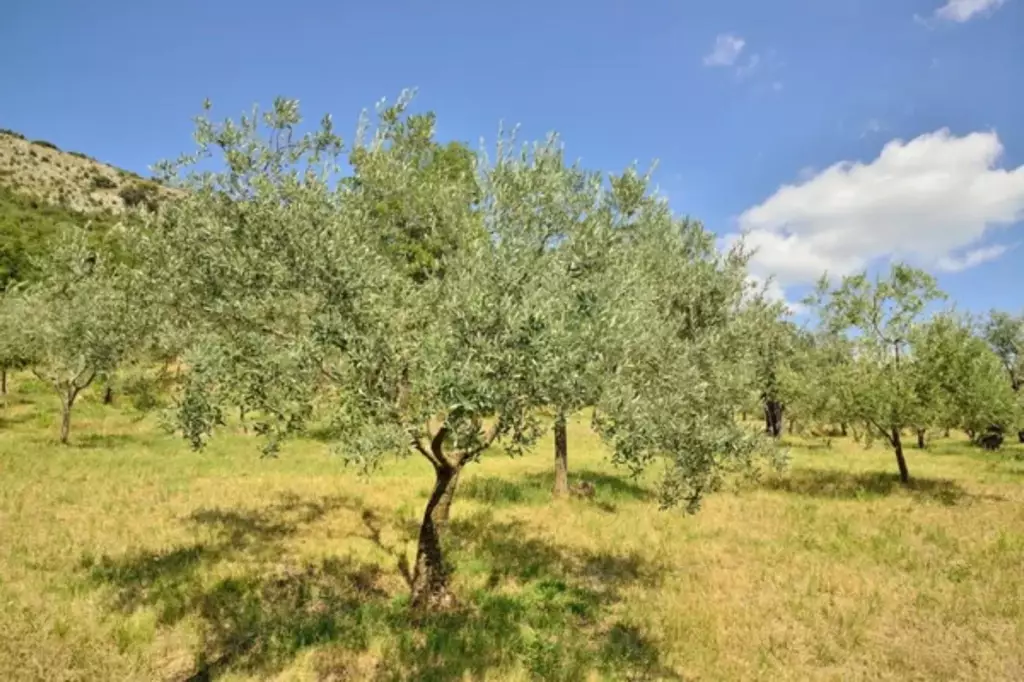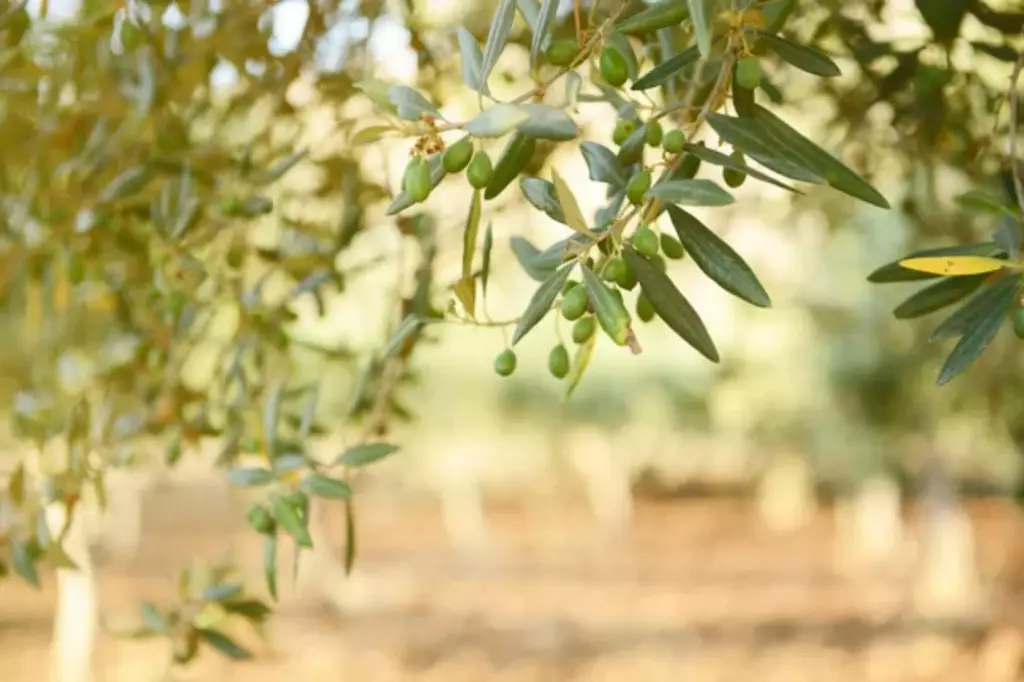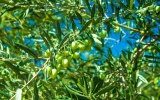Do You Need Two Olive Trees to Produce Fruit?
Olive trees are predominantly pollinated by wind, requiring specific conditions for optimal fruit set, including suitable temperature ranges and minimal rain during the flowering period. However, the question remains: when cultivating olive trees, will one tree be enough? Let's find out.
Contrary to common belief, many olive tree varieties are self-fertile and do not require a second tree to produce fruit. However, having a second tree of a different variety nearby can improve pollination and potentially increase fruit yield.
Some varieties, like the Arbequina, are self-pollinating, meaning they can produce fruit on their own, while certain types require a different variety nearby for cross-pollination. Let's find out which olive tree varieties are self-fertile and which require a second tree to produce fruit.
Summary
- Self-fertile olive trees like 'Arbequina', 'Koroneiki', and 'Frantoio' can fruit on their own, yet benefit from cross-pollination for higher yields.
- Cross-pollinating olive trees, even self-fertile ones, can increase productivity by more than 10%.
- Pairing 'Arbequina' with 'Frantoio', 'Manzanilla' with 'Sevillano' or 'Picholine', and 'Mission' with 'Ascolano' optimizes pollination and fruit production.
- While a single olive tree, especially self-fertile varieties, can produce fruit, having a different variety nearby for cross-pollination enhances yield and quality.

On this page:
Do Olive Trees Need to Be in Pairs?
Some olive trees are self-fertile, meaning you don't necessarily need two trees to produce fruit. However, even self-pollinating olive trees benefit from cross-pollination, resulting in higher yields.
Having a different variety of olive trees nearby can increase your tree's productivity by more than 10%. Here are factors to consider:
Take note of which variety of olive trees you are cultivating
Olive trees come in numerous varieties, each with its own set of characteristics, including their pollination requirements. Some are self-fertile or self-pollinating, meaning they can produce fruit on their own without the need for pollen from another tree.
Examples of self-fertile varieties include 'Arbequina', 'Koroneiki', and 'Frantoio'. However, even among self-fertile varieties, the presence of a different olive tree variety can significantly enhance fruit set and yield through cross-pollination.

Conversely, some varieties are self-sterile and cannot produce fruit without pollen from another variety. For those, having at least one other compatible olive tree nearby is essential.
Aim for a more effective pollination
Olive trees can be pollinated by wind or insects, with wind being the primary mode. For effective pollination, especially in the case of varieties that benefit from or require cross-pollination, you need to have compatible varieties within a reasonable distance from one another.
The presence of a pollinator variety can increase fruit set significantly, by more than 10%, as mentioned. Some varieties are specifically recommended as pollinators for others due to their flowering time overlap and compatibility.
Recommended pairings for optimal yield
When planting olive trees to boost fruit production, pairing certain varieties can enhance pollination.
| Olive Variety | Recommended Pollinator |
|---|---|
| Arbequina | Frantoio |
| Manzanilla | Sevillano, Picholine |
| Mission | Ascolano |
Arbequina is self-fertile but benefits from the presence of other varieties like the Frantoio.
For Manzanilla trees, pairing with Sevillano or Picholine can increase your yields. If you're growing Mission olive trees, consider planting an Ascolano nearby for better pollination.
The Kalamata variety, while partially self-fertile, could still benefit from cross-pollination with Koroneiki. And if you're interested in Nocellara del Belice, which requires cross-pollination, a good partner would be the Biancolilla.
Observe proper spacing
While considering pollination, you need to ensure that the trees are not so close that they compete for resources or hinder each other's growth and access to sunlight.
Conversely, they shouldn't be so far apart that pollination becomes inefficient. Optimal spacing can vary, but generally, trees are planted at distances of about 20 feet (6 meters) apart to ensure good airflow, sunlight penetration, and efficient pollination.
Are Olive Trees Self-Pollinating?
Many of the olive tree varieties you might consider for your garden are indeed self-pollinating. This means that you don't necessarily need another tree for your olive tree to produce fruit. However, cross-pollination can improve fruit set.
Here’s a glance at self-pollinating olive trees:
| Self-Pollinating Olive Varieties |
|---|
| Arbequina |
| Koroneiki |
| Frantoio |
| Coratina |
| Picual |
Self-fertile olive tree varieties
Several self-fertile or self-pollinating olive tree varieties can bear fruit on their own. These varieties produce both the male and female flower parts necessary for pollination without the need for another tree.
One popular self-fertile variety is the Arbequina, which is well-suited for containers due to its smaller size. This means even if you have limited space, you can still enjoy homegrown olives.
The 'Koroneiki' olive is celebrated for its high-quality oil and is also self-fertile, making it an excellent choice for your garden.

By choosing any of these self-pollinating olive tree varieties, you don't need to worry about planting another variety alongside for cross-pollination. This simplifies your gardening endeavors while still promising a fruitful olive harvest.
Can you plant just one olive tree?
You can certainly plant a single olive tree in your garden. Many olive tree varieties are self-fertile, meaning they don't necessarily require another tree to pollinate and produce fruit.
However, having a second olive tree of a different cultivar nearby can enhance pollination and potentially increase your yield.
Olive trees are known for their ability to adapt to various soil types, as long as the soil is well-drained. They thrive in climates with warm, sunny summers and mild winters.
A single tree can be a great start to enjoying the beauty and possible fruit yield without committing to multiple trees.
Here's what to keep in mind for your single olive tree:
- Sunlight: Ensure it receives full sun exposure.
- Soil: Plant in well-drained soil.
- Temperature: Best grown in areas where temperatures don't drop below 20°F.
Will a single olive tree produce fruit?
You might wonder if you need a whole grove of olive trees to enjoy home-grown olives. The good news is that just one tree can suffice.
Olive trees are predominantly self-fertile, meaning they can pollinate themselves and produce fruit on their own.
Here's what you need to consider:
- Pollination: While a single olive tree can produce fruit, having a second tree to enhance cross-pollination can increase your overall yield.
- Varieties: Some varieties of olive trees are better at self-pollinating than others. The well-known Arbequina is a good example of a self-fertile variety.
- Care: Regular care is crucial. This includes proper sunlight, watering, and pruning.
- Age: Remember, olive trees mature slowly. They usually start bearing fruit around their third to fifth year.
Self-Incompatible Olive Tree Varieties
When selecting olive trees for your garden, you'll encounter varieties that cannot self-pollinate. These are known as self-incompatible cultivars and require a pollinator to bear fruit. Cross-pollination is key for these types of olive trees.

For instance, take the cultivars such as 'Manzanillo' and 'Sevillano'. They're admired for their large, flavorful olives, but they won’t produce fruit without a compatible partner nearby. To secure a harvest, you need to plant these alongside a suitable pollinator.
Here are some common pairings:
- Manzanillo: Plant with 'Sevillano', 'Mission', or 'Ascolano'.
- Sevillano: Good matches include 'Manzanillo', 'Mission', or 'Pendolino'.
Without the right match, you might end up with a fruitless olive tree. To increase the odds of fruit set, ensure that your garden has both the self-incompatible cultivar and its recommended pollinator.
The presence of both ensures the cross-pollination process can occur, with the help of wind or natural pollinators like bees.
Cross-Pollination Explained
When planting olive trees, you need to understand how pollination influences your trees' ability to bear fruit. Typically, an olive tree carries flowers with both male and female parts, capable of producing fruit on their own.
However, some olive trees increase their yield when cross-pollinated. In cross-pollination, pollen from one tree's flowers fertilizes another tree's flowers.
This transfer often involves wind, and while olive trees generally don't require insects for pollination, certain cultivars may benefit from having a partner.
To utilize cross-pollination, you'll need two different olive tree pairings. The trees should not be the same variety but compatible with different ones, as this enhances fruit set compared to self-pollination alone.
Cross-pollination advantages
When you're growing olive trees, considering cross-pollination can enhance your harvest. Though many olive varieties are self-fertile, cross-pollination can significantly boost their yield. This process involves the transfer of pollen from the flower of one olive tree to the flower of a different olive tree variety.
-
Increased yield: Cross-pollinated trees can experience an increase in yield. Studies have indicated that yields can improve by more than 10% when cross-pollination occurs.
-
Improved fruiting: The likelihood of fruit set, where flowers develop into fruit, is generally higher in cross-pollinated trees. More flowers can turn into olives, which means a fruitful harvest for you.
-
Quality of fruit: Not only does cross-pollination potentially increase the quantity of the fruit, but it might also improve the quality. This could mean better-tasting olives and, if you're producing olive oil, a superior end product.
Common Misconceptions About Fruit Production in Olive Trees
Olive trees are often surrounded by myths and misconceptions regarding their fruit production. Let's clarify some of these to ensure the health and productivity of these valuable plants.
The necessity of multiple trees for fruit production
A widespread belief is that one needs two olive trees to produce fruit. This is not always the case.
While it's true that cross-pollination can enhance fruit yield and quality, there are self-pollinating varieties, such as 'Arbequina,' capable of fruiting on their own. However, introducing another tree nearby can indeed boost the quantity and quality of the olives produced.
Fruiting is merely a waiting game
Many assume that planting an olive tree and waiting is all it takes to enjoy a bountiful harvest. This misconception overlooks the essential practices of adequate watering and proper pruning.
Specifically, olive trees require sufficient watering during dry periods and strategic pruning to ensure sunlight penetration and air circulation, both critical for successful fruiting.
Soil quality is irrelevant to olive oil quality
The misconception that the quality of olive oil depends solely on the fruit ignores the significant role of soil quality.

Well-draining soil is crucial for healthy fruit set and oil quality. Issues such as overwatering and underwatering can adversely affect the tree, leading to root problems or smaller olives, respectively.
Olive trees are immune to pests and diseases
There's a myth that olive trees are resistant to all pests and diseases. Unfortunately, this is not true. Olive trees can fall prey to pests like the olive fruit fly and diseases such as olive knots.
Regular inspection and timely intervention are vital to maintaining tree health and ensuring a good fruit yield.



